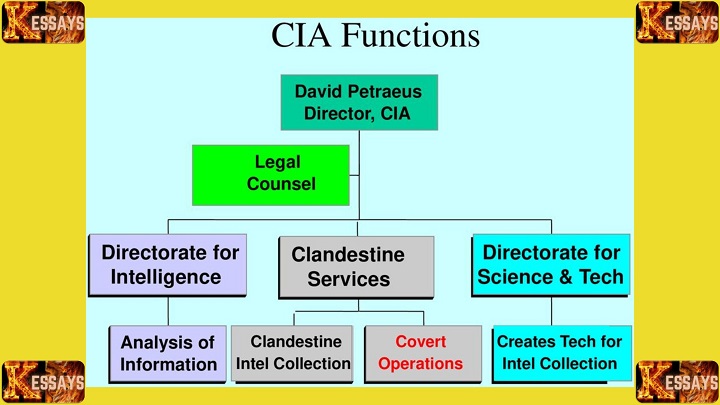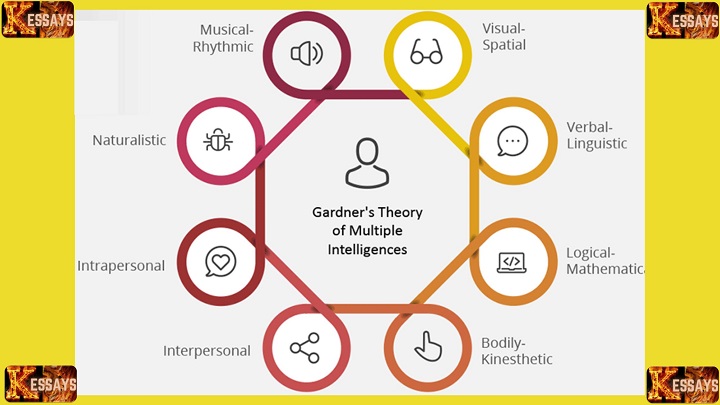Introduction
The intelligence cycle is a systematic and continuous process that forms the foundation of intelligence gathering, analysis, and dissemination. It comprises various interconnected stages that allow intelligence agencies to collect, process, and utilize information effectively to support national security and decision-making. This essay provides a comprehensive overview of the intelligence cycle, exploring its subtopics, including collection, processing, analysis, dissemination, and evaluation.
I. Collection Phase
The collection phase is the critical foundation of the intelligence cycle, as it lays the groundwork for gathering essential information from diverse sources. This phase ensures that intelligence agencies have access to a wide array of data, enabling comprehensive analysis and informed decision-making. The collection phase comprises several methods, each serving a specific purpose in obtaining intelligence:
-
Human Intelligence (HUMINT):
Human intelligence involves gathering information through human sources, such as intelligence agents, informants, or diplomats. These individuals have direct access to valuable insights from their interactions with various individuals, groups, or organizations. HUMINT is particularly valuable for obtaining nuanced, context-rich intelligence, especially in situations where other collection methods may be limited.
-
Signals Intelligence (SIGINT):
SIGINT focuses on intercepting and analyzing electronic communications, such as radio signals, emails, and phone calls. This method allows intelligence agencies to monitor and gather data from communications networks and electronic devices used by both adversaries and friendly entities. SIGINT is crucial for understanding the intentions and activities of potential threats and detecting patterns in their communications.
-
Imagery Intelligence (IMINT)
IMINT relies on satellite imagery, aerial photography, and other visual intelligence sources to gain valuable visual information. This method provides analysts with a visual perspective of areas of interest, including military installations, infrastructure, and potential conflict zones. IMINT aids in identifying changes on the ground and monitoring activities that may be concealed from other collection methods.
-
Geospatial Intelligence (GEOINT)
GEOINT involves the analysis of geospatial data, which includes information related to geographic locations and features. This method combines data from various sources, such as satellite imagery, maps, and geographic information systems (GIS), to understand activities and events occurring in specific geographical areas. GEOINT is valuable for military operations, disaster response, and environmental monitoring.
-
Open Source Intelligence (OSINT)
OSINT entails the collection and analysis of publicly available information from newspapers, social media, websites, and other open sources. This method complements other intelligence collection techniques and can provide valuable insights into the public perception of events, opinions, and trends. OSINT is particularly useful for monitoring public sentiment and identifying potential emerging threats.
Each method within the collection phase has its strengths and limitations, making them valuable when used in combination. Intelligence agencies must carefully integrate and validate information obtained through these methods to ensure its accuracy and reliability. The collected data then moves on to the subsequent stages of the intelligence cycle, where it undergoes processing, analysis, and dissemination to support decision-makers in addressing national security challenges effectively.

II. Processing Phase
The processing phase is a critical step in the intelligence cycle, where the collected data undergoes meticulous examination, organization, and preparation for analysis. This stage is essential for ensuring that the intelligence is accurate, relevant, and actionable. Key subtopics within the processing phase include:
-
Validation and Authentication:
Validation and authentication involve verifying the accuracy and authenticity of the collected information. It is crucial to ensure that the intelligence is reliable and comes from credible sources. Intelligence agencies use various methods, such as cross-referencing with multiple sources or utilizing authentication tools, to confirm the veracity of the data.
-
Collation and Integration
Collected data from various sources is collated and integrated into a cohesive database or repository. This organization facilitates efficient analysis and prevents redundancy. Integration also enables analysts to view the data from different angles, revealing connections and patterns that might not be evident when examining individual pieces of information.
Data management is a vital aspect of the processing phase, ensuring that the collected information is stored securely and accessed only by authorized personnel. Strict access controls and encryption measures are employed to protect sensitive intelligence from unauthorized access, leaks, or cyber-attacks.
Data fusion involves combining different types of intelligence, such as HUMINT, SIGINT, and IMINT, to create a more comprehensive and accurate understanding of the situation. This process enhances the intelligence product's depth and breadth, allowing analysts to gain a holistic view of the subject matter.
-
Translation and Transcription
In cases where intelligence is collected in foreign languages, translation and transcription are essential steps in the processing phase. Foreign language intelligence is translated or transcribed into the language understood by analysts. This ensures that language barriers do not hinder the analysis and interpretation of critical information.
The processing phase is a dynamic and intricate process that requires the expertise of skilled analysts and robust technological support. During this stage, data is prepared to undergo analysis, where it will be interpreted, contextualized, and transformed into actionable intelligence. The accuracy and efficiency of the processing phase significantly influence the overall effectiveness of the intelligence cycle, supporting policymakers and decision-makers in addressing security challenges and making informed choices.
III. Analysis Phase
The analysis phase of the intelligence cycle is a critical stage where processed data is carefully examined, interpreted, and transformed into valuable insights. Analysts use a variety of methods and techniques to gain a comprehensive understanding of the intelligence and its implications. Key subtopics within the analysis phase include:
- Pattern Recognition: Analysts search for patterns, trends, and anomalies within the data to identify potential threats or opportunities. Patterns can reveal recurring behaviors, activities, or indicators that may be significant in understanding the intentions or actions of adversaries. Identifying patterns is crucial for detecting emerging threats, predicting future actions, and providing early warnings to decision-makers.
- Risk Assessment: During the risk assessment process, analysts evaluate the likelihood and potential impact of various scenarios based on the intelligence gathered. By assessing risks, decision-makers can make informed choices and allocate resources effectively to address potential threats. The risk assessment helps prioritize issues and focus efforts on areas that require immediate attention.
- Comparative Analysis: Comparative analysis involves comparing the newly acquired intelligence with historical data or information from other sources. This process provides context and depth to the analysis, allowing analysts to identify changes, developments, or shifts in activities over time. Comparative analysis also helps identify trends and patterns that might not be evident when looking at isolated data.
- Analytical Techniques: Various analytical techniques are employed to gain a comprehensive understanding of the intelligence data. These techniques may include link analysis, which examines the relationships between different entities, trend analysis, which identifies long-term developments, and network analysis, which explores connections between various elements. By using different analytical methods, analysts can draw meaningful conclusions and identify potential implications.
- Red Teaming: Red teaming is an exercise where alternative perspectives are explored to challenge assumptions and strengthen the analysis. This process involves assigning a group of analysts, known as the "red team," to examine the intelligence from a different viewpoint. By adopting this adversarial approach, potential weaknesses in the analysis can be identified, and the intelligence product can be enhanced.
The analysis phase is a dynamic and complex process that requires a high level of expertise, critical thinking, and collaboration among analysts. The insights generated during this phase form the basis for intelligence reports and briefings that inform decision-makers, policymakers, and operational planners. The accuracy, objectivity, and depth of the analysis significantly influence the effectiveness of intelligence-led decision-making, ultimately contributing to national security and strategic success.

IV. Dissemination Phase
The dissemination phase is a crucial step in the intelligence cycle, where the analyzed intelligence is shared with relevant stakeholders in a manner that maximizes its effectiveness and utility. Effective dissemination ensures that decision-makers receive timely and relevant information to address national security challenges. Key subtopics within the dissemination phase include:
- Tailored Reporting: Intelligence is presented in various formats tailored to the needs of different consumers. Policymakers may require concise executive summaries, while military commanders may need detailed operational assessments. Tailoring the reporting ensures that the intelligence is presented in a manner that aligns with the specific requirements and responsibilities of each stakeholder, facilitating informed decision-making.
- Security Protocols: Dissemination protocols are essential to maintain the security and confidentiality of sensitive intelligence. Only authorized individuals with appropriate security clearances should have access to classified information. Stringent security measures, such as encryption, compartmentalization, and need-to-know access, are employed to prevent leaks or unauthorized disclosure of intelligence.
- Timeliness and Relevance: Timeliness is critical in the dissemination phase. Intelligence loses value if it is not delivered promptly to decision-makers. Dissemination should be accomplished within a timeframe that allows decision-makers to act on the information effectively. Additionally, the intelligence must be relevant to the current and foreseeable situations to ensure its usefulness in shaping policies or operational strategies.
- Dissemination Channels: Various communication channels are utilized to share intelligence with relevant stakeholders. Secure databases, where authorized users can access classified information, are used for long-term storage and reference. Briefings and meetings are conducted for face-to-face discussions with key decision-makers. Secure communication networks ensure encrypted and protected transmission of sensitive intelligence between different agencies or personnel.
- Feedback Mechanisms: Intelligence consumers, such as policymakers, military leaders, or law enforcement agencies, are encouraged to provide feedback to analysts. This feedback loop helps in refining the intelligence process by identifying areas of improvement, validating the accuracy of the intelligence, and addressing specific informational needs.
The dissemination phase is a collaborative effort between intelligence analysts and consumers. Successful dissemination ensures that intelligence is effectively used to formulate policies, strategies, and operational plans that safeguard national security interests. By facilitating timely, secure, and relevant distribution of intelligence, the dissemination phase plays a vital role in bridging the gap between analysis and action. Continuous improvement in the dissemination process ensures that decision-makers receive the best intelligence support to address ever-evolving threats and challenges.
V. Evaluation Phase
The evaluation phase is the final step of the intelligence cycle and is vital for refining intelligence practices, enhancing capabilities, and ensuring that intelligence agencies remain effective and responsive to evolving challenges. Key subtopics within the evaluation phase include:
- Effectiveness Assessment: In the effectiveness assessment, the accuracy and relevance of the intelligence are evaluated in light of subsequent events or actions. Analysts and decision-makers review how well the intelligence predicted outcomes or informed decisions. This assessment helps gauge the overall success of the intelligence process and identify areas for improvement.
- Lessons Learned: The evaluation phase involves analyzing both successes and failures to identify lessons learned. By understanding what worked well and what did not, intelligence agencies can refine their methods and approaches. Lessons learned are valuable for guiding future intelligence operations and preventing the repetition of mistakes.
- Continuous Improvement: Feedback from intelligence consumers, such as policymakers, military leaders, or law enforcement personnel, is crucial for driving ongoing improvements in the intelligence cycle. By actively seeking input from consumers and incorporating their insights, intelligence agencies can enhance the quality and relevance of the intelligence products and services they provide.
- Adaptation to Changing Threats: Threats and challenges faced by nations are dynamic and ever-evolving. The evaluation phase emphasizes the need for intelligence agencies to remain agile and adaptable. It is essential to monitor emerging threats, technological advancements, and global developments to ensure that intelligence efforts remain relevant and effective in addressing current and future challenges.
- Ethical Considerations: Ethical assessments are an integral part of the evaluation phase. Intelligence agencies must ensure that their practices and operations adhere to legal and moral principles. This includes respecting individual privacy rights, avoiding unnecessary harm, and conducting intelligence activities in a manner consistent with national and international laws and conventions.
The evaluation phase is an iterative process that feeds back into the entire intelligence cycle. The insights gained from assessing effectiveness, learning from experiences, and considering ethical considerations lead to refinements and adaptations in collection, processing, analysis, and dissemination methods. Continuous improvement is essential in the intelligence domain to meet the evolving security needs of nations and protect their interests effectively.
In conclusion, the evaluation phase is a critical component of the intelligence cycle, focusing on assessing the effectiveness of intelligence efforts, learning from experiences, and driving continuous improvement. By embracing lessons learned, adapting to changing threats, and ensuring ethical practices, intelligence agencies can enhance their capabilities and better support national security and decision-making objectives.

Conclusion
The intelligence cycle is a comprehensive and iterative process that forms the backbone of intelligence gathering and analysis. From collection to evaluation, each stage plays a critical role in providing decision-makers with accurate, relevant, and timely intelligence to safeguard national security. By understanding the intricacies of the intelligence cycle and its subtopics, intelligence agencies can continuously enhance their capabilities and contribute to effective policymaking and operational success.


